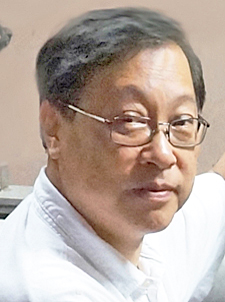2016 Tissue Forum Explores Latest Developments in Alternative Fiber
The up-close look at alternative fibers in tissue making in Session TF2 of this year’s Tissue360o Forum at PaperCon, May 16-18, 2016, Cincinnati, Ohio, USA, actually begins in session TF1, which is the keynote session for this well-attended event, now in its fourth year.

In TF1, Cristine Schulz (photo right) , North American Sustainability Business Partner, Kimberly-Clark, focuses on "Creating a Better Future with Alternative Fibers." In her two-part presentation, she describes how K-C is producing paper towels and tissues that are environmentally responsible and meet performance expectations associated with the Kleenex and Scott brands. As demand for forest resources increase and available recovered paper is on the decline, K-C is identifying new sources of fiber such as wheat straw, which can provide the quality people expect while aligning with corporate sustainable fiber commitments. In 2014, K-C introduced products with wheat straw that provide the quality people expect while aligning with corporate sustainable fiber commitments.
Schulz continues her presentation in Session TF2, which examines Alternative Fibers for Tissue with a total of four in-depth examinations of the latest technologies and approaches in the use of alternative fibers for tissue and towel production. In her Part 2 presentation, she talks more in detail about the products and claims (20% wheat straw, no loss of performance, etc.).
Session TF2 includes three additional presentations on alternative fibers, including an extensive review by Xuejun Zou of FPInnovations on non-wood fibers and their applications in tissue. As Zou notes, non-wood fibers are becoming a hot topic as non-wood pulp mills are being built in North America and tissue companies are rolling out new lines of tissues and paper towels that incorporate wheat straw and bamboo pulps.
One reason for this trend, Zou contends, is that there is a growing consumer perception that "tree-free" tissues are more environmentally friendly. The second reason is that some non-wood fibers (e.g. bamboo) seem to have some unique properties for enhancing bulk and softness of tissue. "Although these points are debatable, the use of non-wood fibers does provide some opportunities for marketing and new product development," Zou explains.

Also part of the TF2 Session, Hiroki Nanko (photo left)) of Insight Technology International presents the latest approaches to kneader-based non-wood pulping for tissue fiber production. His presentation focuses on a new Alkaline Peroxide Mechanical Pulping (APMP) system based on kneader technology developed by Taizen of Japan. According to Nanko, a wide variety of non-wood plant materials can be pulped, including wheat straw, rice straw, bagasse, bamboo, kenaf, Arundo donax, Miscanthus, switch grass, flax, oil palm EFB, etc., with this mechanical pulping system.
Rounding out the TF2 Session, Zhirun Yuan of FPInnovations updates attendees on new developments using Bleached Thermo Chemi-Mechanical Pulping (BTCMP) for processing of tissue fibers.
TAPPI
http://www.tappi.org/
 In TF1, Cristine Schulz (photo right) , North American Sustainability Business Partner, Kimberly-Clark, focuses on "Creating a Better Future with Alternative Fibers." In her two-part presentation, she describes how K-C is producing paper towels and tissues that are environmentally responsible and meet performance expectations associated with the Kleenex and Scott brands. As demand for forest resources increase and available recovered paper is on the decline, K-C is identifying new sources of fiber such as wheat straw, which can provide the quality people expect while aligning with corporate sustainable fiber commitments. In 2014, K-C introduced products with wheat straw that provide the quality people expect while aligning with corporate sustainable fiber commitments.
In TF1, Cristine Schulz (photo right) , North American Sustainability Business Partner, Kimberly-Clark, focuses on "Creating a Better Future with Alternative Fibers." In her two-part presentation, she describes how K-C is producing paper towels and tissues that are environmentally responsible and meet performance expectations associated with the Kleenex and Scott brands. As demand for forest resources increase and available recovered paper is on the decline, K-C is identifying new sources of fiber such as wheat straw, which can provide the quality people expect while aligning with corporate sustainable fiber commitments. In 2014, K-C introduced products with wheat straw that provide the quality people expect while aligning with corporate sustainable fiber commitments.  Also part of the TF2 Session, Hiroki Nanko (photo left)) of Insight Technology International presents the latest approaches to kneader-based non-wood pulping for tissue fiber production. His presentation focuses on a new Alkaline Peroxide Mechanical Pulping (APMP) system based on kneader technology developed by Taizen of Japan. According to Nanko, a wide variety of non-wood plant materials can be pulped, including wheat straw, rice straw, bagasse, bamboo, kenaf, Arundo donax, Miscanthus, switch grass, flax, oil palm EFB, etc., with this mechanical pulping system.
Also part of the TF2 Session, Hiroki Nanko (photo left)) of Insight Technology International presents the latest approaches to kneader-based non-wood pulping for tissue fiber production. His presentation focuses on a new Alkaline Peroxide Mechanical Pulping (APMP) system based on kneader technology developed by Taizen of Japan. According to Nanko, a wide variety of non-wood plant materials can be pulped, including wheat straw, rice straw, bagasse, bamboo, kenaf, Arundo donax, Miscanthus, switch grass, flax, oil palm EFB, etc., with this mechanical pulping system.